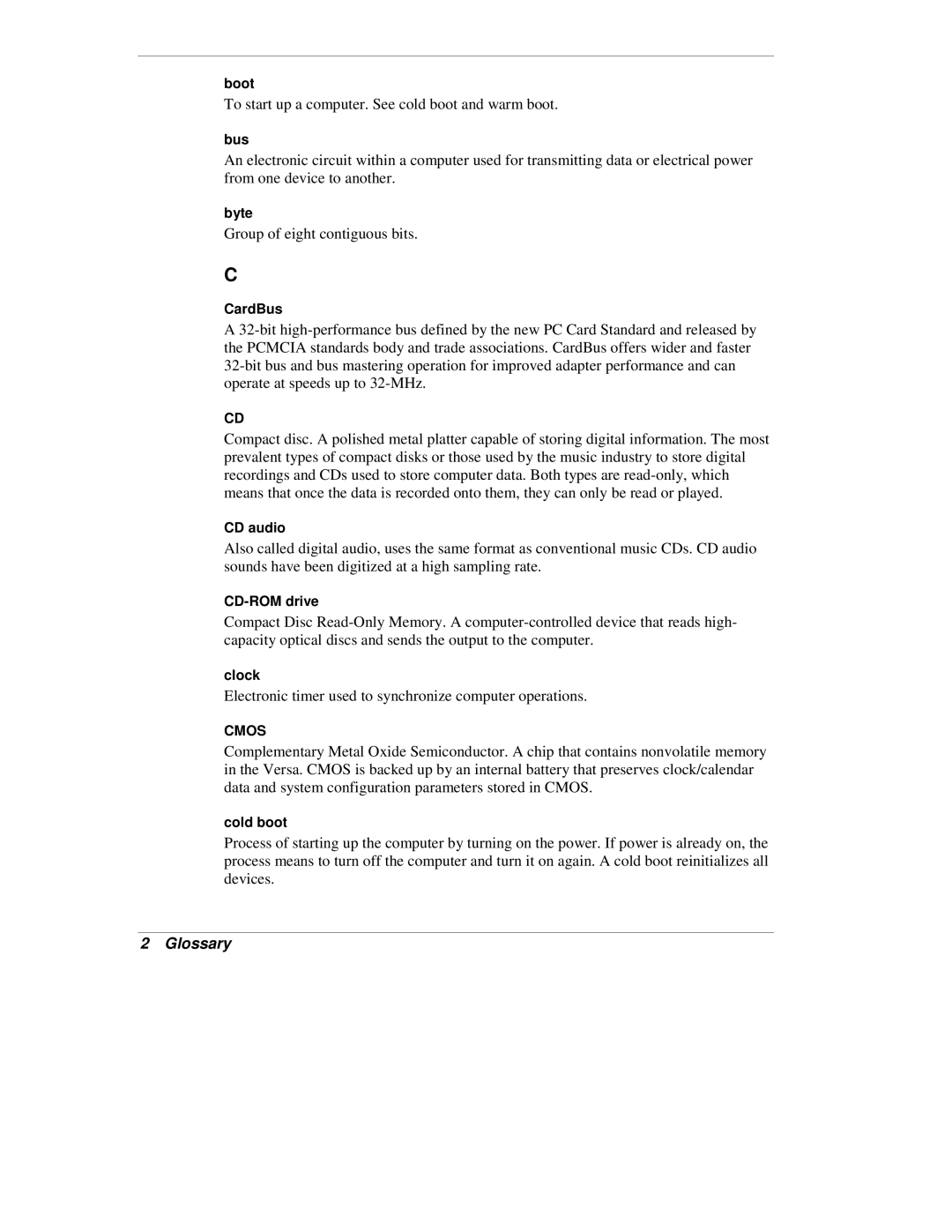
boot
To start up a computer. See cold boot and warm boot.
bus
An electronic circuit within a computer used for transmitting data or electrical power from one device to another.
byte
Group of eight contiguous bits.
C
CardBus
A
CD
Compact disc. A polished metal platter capable of storing digital information. The most prevalent types of compact disks or those used by the music industry to store digital recordings and CDs used to store computer data. Both types are
CD audio
Also called digital audio, uses the same format as conventional music CDs. CD audio sounds have been digitized at a high sampling rate.
Compact Disc
clock
Electronic timer used to synchronize computer operations.
CMOS
Complementary Metal Oxide Semiconductor. A chip that contains nonvolatile memory in the Versa. CMOS is backed up by an internal battery that preserves clock/calendar data and system configuration parameters stored in CMOS.
cold boot
Process of starting up the computer by turning on the power. If power is already on, the process means to turn off the computer and turn it on again. A cold boot reinitializes all devices.
